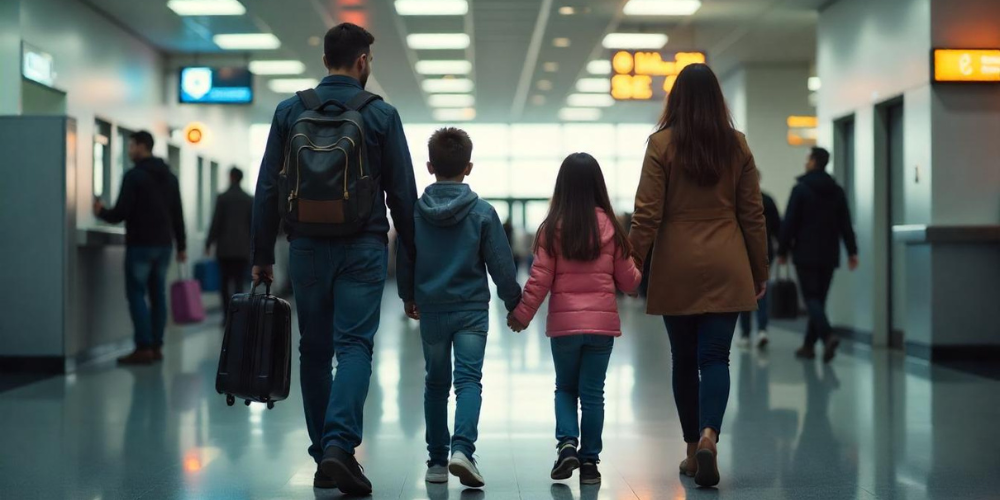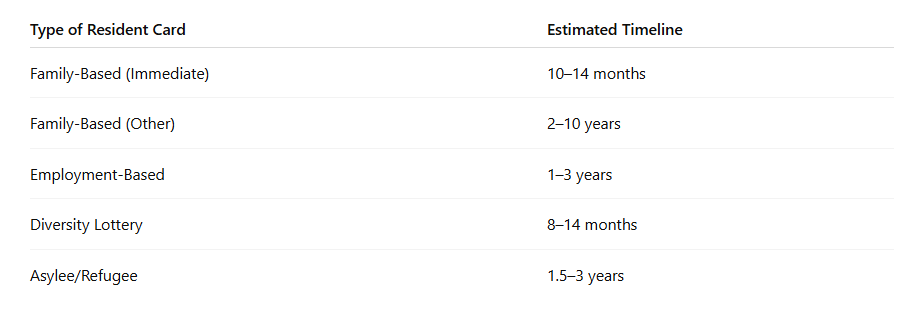
So, you’re wondering: How long does it take to get a resident card? You’re not alone. It’s one of the most common (and pressing!) questions for anyone embarking on the immigration journey. And let’s be real—waiting for a resident card, or green card, can feel like watching water boil… slowly. But don’t worry—I’ve got you covered. This guide breaks down the process, timelines, and helpful tips to keep your expectations realistic and your stress levels low.
What Is a Resident Card and Why Is It Important?
Let’s start with the basics. A resident card, often called a green card, gives you lawful permanent resident (LPR) status in the U.S. It means you can live and work permanently in the country. It’s not the same as a visa, which is temporary, or citizenship, which is permanent and includes voting rights.
Think of it as your golden ticket to the American Dream—with a few bureaucratic hurdles in the way.
Different Types of Resident Cards You Might Be Applying For
Not all green cards are created equal. Your timeline depends a lot on the type of application.
Family-Based Green Cards
These are for spouses, children, parents, or siblings of U.S. citizens or permanent residents. Immediate relatives (like spouses and parents) get faster processing—sometimes within 10 to 13 months—while other relatives may wait several years, depending on country caps.
Employment-Based Green Cards
If you’re being sponsored by an employer, expect steps like labor certification (PERM), which can take 6–12 months, followed by Form I-140 approval (another 6–12 months), then final processing. Total time? 1 to 3 years, or longer if your country has a backlog.
Diversity Visa Lottery Winners
Yes, the lottery exists—and it’s real! Winners must act quickly since they must complete processing within the same fiscal year they’re selected. The timeline here is around 8 to 14 months, depending on how proactive you are.
Asylum and Refugee Status Applicants
If you were granted asylum, you can apply for a green card one year later, but the actual green card may take another 6 to 18 months after applying. Refugees follow a similar timeline.

Step-by-Step Process of Getting a Resident Card
Understanding each step helps manage expectations and spot potential bottlenecks.
Filing the Immigrant Petition (Form I-130 or I-140)
This is the first hurdle. Processing times here range from 6 months to 2 years, depending on the case type and USCIS service center.
National Visa Center and Consular Processing
If you’re applying from abroad, your case goes to the National Visa Center (NVC) before heading to a U.S. consulate. This step takes about 3–8 months, plus a bit more for interview scheduling.
Adjustment of Status for Those Already in the U.S.
If you’re already in the U.S., you may file Form I-485 to adjust your status. This can take 8 to 14 months from filing to approval, assuming no complications.
What Factors Affect Your Resident Card Timeline?
Here’s the catch: no two cases are alike. These factors play a big role:
– Country of Origin – Applicants from countries like India, Mexico, and the Philippines often face longer waits due to annual visa limits.
– Visa Category – Immediate relatives usually move faster than employment or diversity visa categories.
– USCIS Backlogs – If there’s a backlog (and there often is), your case may sit longer.
– Quality of Your Application – Missing info or documents? Expect delays.
– Legal Representation – Good lawyers can avoid mistakes and speed up filings.
Realistic Timelines: How Long Each Stage Takes (With Averages)
Here’s a snapshot of what you can generally expect:

How to Check the Status of Your Application
Don’t like waiting in the dark? You can track your application:
🖥️ USCIS Case Status Tool: Check your case at USCIS.gov.
📬 Case Updates via Email or Text: Sign up for alerts.
📅 Visa Bulletin: For family/employment applicants with priority dates, this is your lifeline.
Common Delays and How to Avoid Them
Delays happen—but many are avoidable.
❌ Incomplete applications
❌ Missing supporting documents
❌ RFE (Request for Evidence) due to missing info
❌ Background checks taking longer
✅ Double-check everything. Seriously.
✅ Use a qualified immigration attorney if possible.
Tips to Speed Up Your Resident Card Process
While you can’t control everything, these tips help:
📑 Submit a complete, well-organized application
📬 Respond quickly to USCIS requests
👩⚖️ Hire a lawyer if your case is complicated
🏃 Submit forms as soon as you’re eligible

What to Do If Your Application Is Taking Too Long
If it feels like your case is stuck in immigration limbo:
📞 Call USCIS or schedule an InfoPass appointment
✉️ Submit a case inquiry online
🧑⚖️ Contact an immigration lawyer
🏛️ File a writ of mandamus (lawsuit) in extreme cases
Life While You Wait: What You Can and Can’t Do
While waiting, you can:
✅ Apply for a work permit (EAD)
✅ Request travel authorization (Advance Parole)
❌ But DON’T travel without permission—it can mess up your application!
FAQs About Resident Card Timelines
Q1: Can I speed up my green card application?
Only in urgent humanitarian situations, through expedited processing.
Q2: Is premium processing available for green cards?
Not for the whole process. Only Form I-140 (employment-based) can be expedited.
Q3: Does a pending green card mean I can’t travel?
You’ll need Advance Parole before traveling outside the U.S.
Q4: Why does my friend’s green card come faster?
Each case varies—different category, country, or USCIS center.
Q5: How do I know if my case is delayed?
Compare your timeline to the USCIS processing times online.
Q6: What happens if my visa number isn’t current?
You’ll need to wait until your priority date becomes current.

